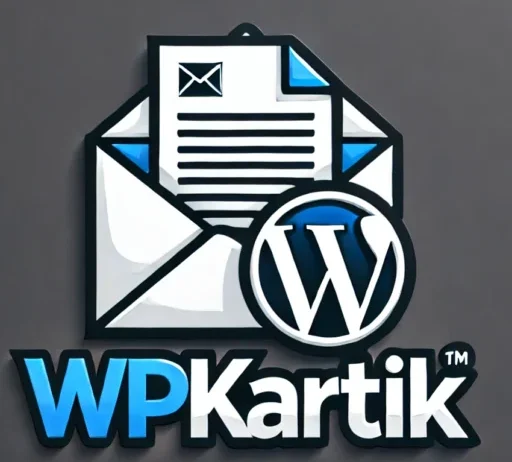Last updated on August 7th, 2025 at
Hey, stuck choosing between ConvertKit vs ActiveCampaign for your email marketing?
You’re not alone — it’s like picking between two tools for building your dream online business. One’s clean, simple, and made for creators. The other? A feature-packed powerhouse built for serious automation and growth.
ConvertKit is like the focused, minimalist workspace. It’s built for bloggers, YouTubers, and creators who want to grow their audience and sell products without getting lost in complex settings. Super easy to use, clean interface, and designed to help you create and connect fast.
ActiveCampaign, on the other hand, is like the all-in-one business command center. It’s made for marketers who want deep automations, CRM tools, powerful segmentation, and tons of control over every customer touchpoint. It takes a bit more setup — but wow, the power it gives you!
As always, it comes down to what you need. Want a simple platform that helps you grow without overwhelm? Or are you ready to dive into advanced strategies with a high-performance engine?
Let’s break it down and help you decide which one’s the perfect fit for your next step. 👇
A Quick Intro to ConvertKit and ActiveCampaign
💡 What is ConvertKit (Kit)?

ConvertKit is a creator-focused email marketing platform designed to be clean, simple, and easy to use. Launched in 2013, it’s built specifically for online creators like bloggers, YouTubers, podcasters, and digital product sellers. You’ll get powerful email tools without the overwhelm — think visual automation, simple forms, landing pages, and tag-based subscriber management.
✅ Best for: Creators, solopreneurs, and small business owners who want an intuitive platform that helps them grow their audience and sell online — without a steep learning curve.
✨ What is ActiveCampaign?
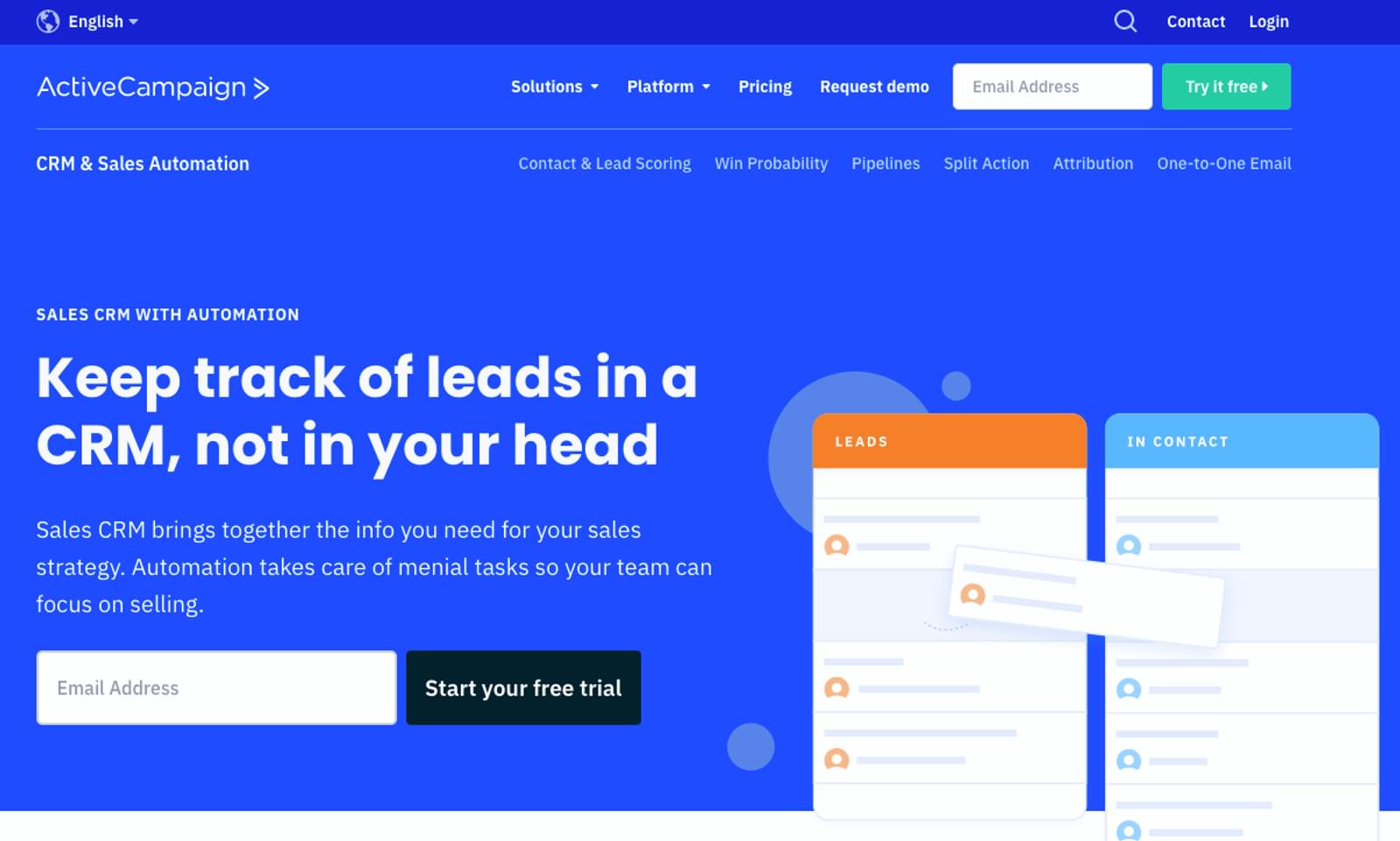
ActiveCampaign is a robust email marketing and automation platform built for businesses that want to go deeper with personalization, automation, and customer relationships. It offers advanced tools like behavioral targeting, sales CRM, conditional content, and detailed split testing. It’s more powerful than ConvertKit — but also more complex.
✅ Best for: Established businesses, marketing teams, and power users who need deep automation, advanced segmentation, and full control over their customer journeys.
Email Editor: How Easy Is It to Build Emails?
Who win For Email Editor:
Which one actually makes it easier to hit send?
You’d be surprised how much time you can waste just trying to get a dang email to look right 😅
So before anything else, let’s talk editors — because if writing emails feels like a chore, you’re not gonna keep doing it.
How They Stack Up (Real Talk)
🖊️ Writing Experience
ConvertKit feels like sitting down in a quiet coffee shop with a blank doc and a story to tell. You just write — no clutter, no buttons screaming at you. It’s smooth, focused, and honestly kinda therapeutic.

ActiveCampaign, on the other hand, feels more like stepping into a design studio. You’re surrounded by tools — powerful ones — but you need to know what they do. Great for building detailed layouts, not so great if you just want to write and go.
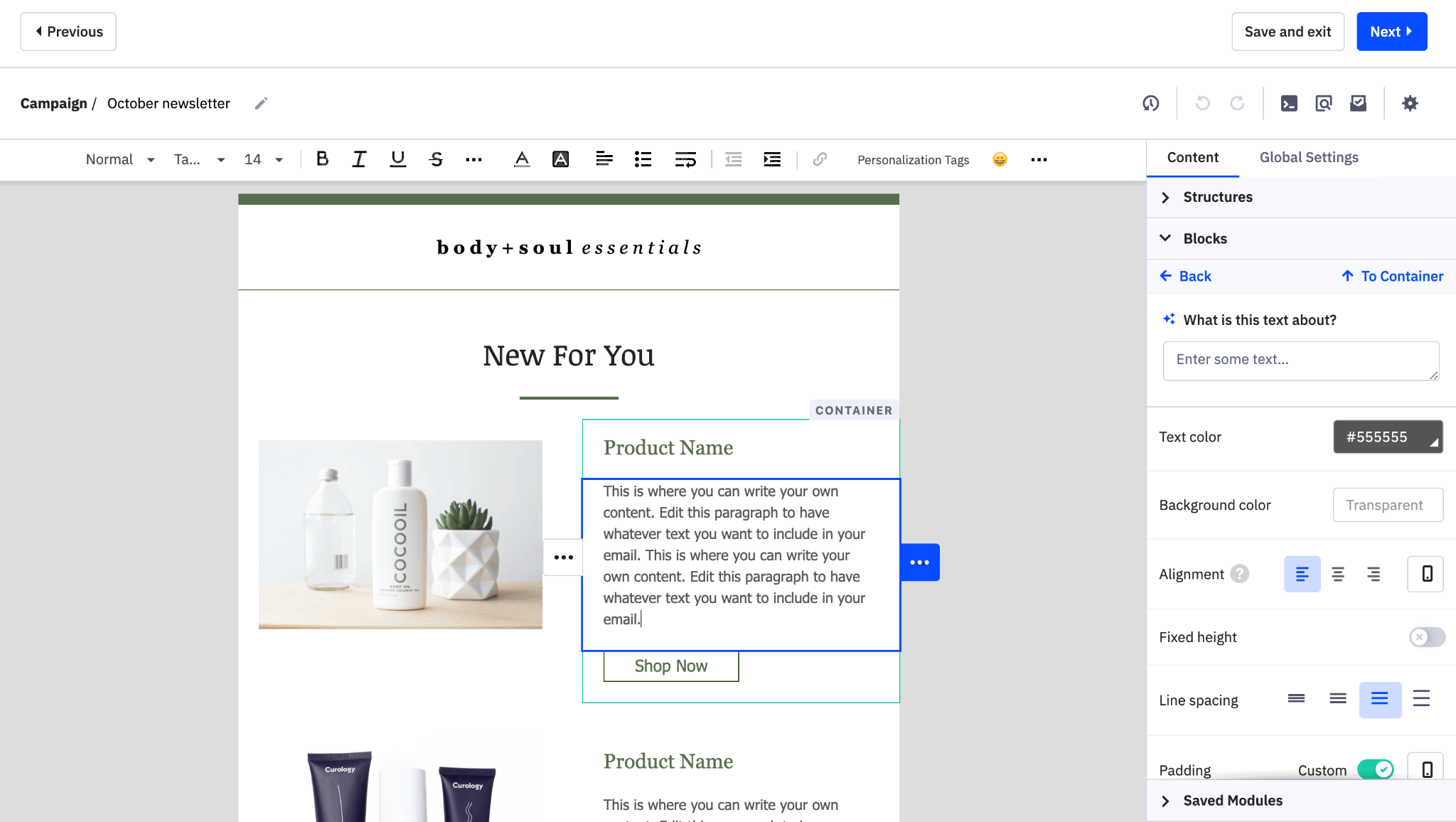
👉 Winner: ConvertKit — if you care more about writing than designing.
🧱 Layout + Design Options
This is where the tables turn.
With ActiveCampaign, you can drag and drop everything — images, buttons, columns, videos, even conditional content (like showing different stuff to different people based on tags).
ConvertKit? You’ve got… text. Maybe a button or two. That’s about it. No layout builder, no sections, no flexibility. And the templates they do offer are pretty hidden — and pretty meh.
👉 Winner: ActiveCampaign — hands down, if visuals matter to you.
⚙️ Reusability & Workflow
One thing I love in ActiveCampaign: you can save custom blocks. So if you use the same footer or promo section a lot, it’s one click away next time. You can also see who edited what — like Google Docs for emails.
ConvertKit? No reusable blocks, no collaboration, no history. It’s one-person, one-email, one-shot. Simple, but not built for teams or systems.
👉 Winner: ActiveCampaign — better for repeatable, scalable workflows.
🧠 Learning Curve
ConvertKit is stupid simple. If you’ve ever written an email, you can figure it out in 5 minutes.
ActiveCampaign… takes some getting used to. It’s not hard, but it’s definitely more “marketer brain” than “creator brain.” You’ll need to click around, experiment, maybe Google a few things.
👉 Winner: ConvertKit — if you want zero learning curve.
Which Editor Fits You?
| Feature | ConvertKit ✍️ | ActiveCampaign 🎨 |
|---|---|---|
| Editor Type | Minimal, text-first | Full drag-and-drop |
| Ease of Use | Very easy | More to learn |
| Design Control | Bare minimum | Highly customizable |
| Templates | Very few | More flexible layouts |
| Best For | Writers, creators | Marketers, ecommerce |
Choose ConvertKit if you:
Just want to write and send without overthinking
Don’t care about flashy layouts
Prefer plain-text, personal vibes over polished design
Choose ActiveCampaign if you:
Need visual layouts and custom sections
Want to build emails like mini landing pages
Are working with a team or running advanced campaigns
Both get the job done. Just depends on how you like to work.
Design & Flexibility: How Much Do You Want to Tweak?
💬 Who wins for design and flexibility?
Design matters — but how much you want to mess with it? That’s the real question.
This category really comes down to how “hands-on” you like to be.
⚙️ Customization
ConvertKit keeps it dead simple. Fonts, colors, buttons? You set them once, and it remembers. No digging into settings every time. It’s like writing in Google Docs — clean, chill, no drama.
![ConvertKit Review - Great, but It's Not for Everyone [2025]](https://dt2sdf0db8zob.cloudfront.net/wp-content/uploads/2021/11/convertkit-review-2021-2.png)
ActiveCampaign gives you full freedom. Want to tweak margins? Drop in a video block? Show different sections depending on who’s reading? Go wild. But heads up — with great power comes… yeah, you know the rest.
![ActiveCampaign Review 2025: Pros, Cons & Pricing [Analyzed]](https://moosend.com/wp-content/uploads/2023/11/Activecampaign-email-template-library.png)
👉 Winner: ActiveCampaign — if you’re the type who lives for creative control.
🧱 Layout Flexibility
ConvertKit doesn’t do drag-and-drop. You’ve got a solid single-column layout and that’s about it. You can add buttons, images, links — but if you’re dreaming of multi-column designs or product grids? Not happening.
ActiveCampaign is basically email LEGO. Stack things, move blocks, split into columns, save your own reusable sections — it’s all there.
👉 Winner: ActiveCampaign — 100%. This one’s not even close.
📱 Mobile Experience
Both tools handle mobile well out of the box. ConvertKit’s simplicity actually works in its favor here — nothing breaks because there’s nothing complex to break.
ActiveCampaign’s responsive design is also great, but you’ll want to test things if you’re getting fancy with layouts.
👉 Winner: Tie — both look great on mobile, but ConvertKit takes zero effort.
🧠 Ease of Use
ConvertKit is for the “just let me write my email” crowd. You don’t design your emails — you send them. It’s fast and distraction-free.
ActiveCampaign feels more like a design platform. Super powerful, but not something you pick up in five minutes.
👉 Winner: ConvertKit — if you care about speed and simplicity
Which One Fits You?
| ConvertKit ✍️ | ActiveCampaign 🎨 | |
|---|---|---|
| Design Style | Minimal, clean | Full creative control |
| Customization | Limited (set-it-once) | Very customizable |
| Builder Type | No drag-and-drop | Full drag-and-drop |
| Dynamic Content | Nope | Yep — smart personalization |
| Best For | Writers who don’t want to tweak | Marketers who love to tweak |
👉 Go with ConvertKit if you:
Want something fast, clean, and no-fuss
Write mostly personal or text-based emails
Hate fiddling with design settings
👉 Go with ActiveCampaign if you:
Want to build fully custom layouts
Love control, personalization, and dynamic content
Need your emails to look as good as they convert
Forms & Landing Pages: Capture Leads with Style
💬 Who win For Forms and Landing Pages:
Want to grow your email list without pulling your hair out? Forms and landing pages are where it all starts — and how smooth (or frustrating) that process feels totally depends on the tool you use.
This one’s about speed vs control.
⚡ Speed to Launch
ConvertKit is ridiculously fast. I made my first opt-in page in under 10 minutes — no joke. Pick a template, drop in your copy, hit publish. Done. Great for launching a freebie or newsletter fast — even if you don’t have a website.
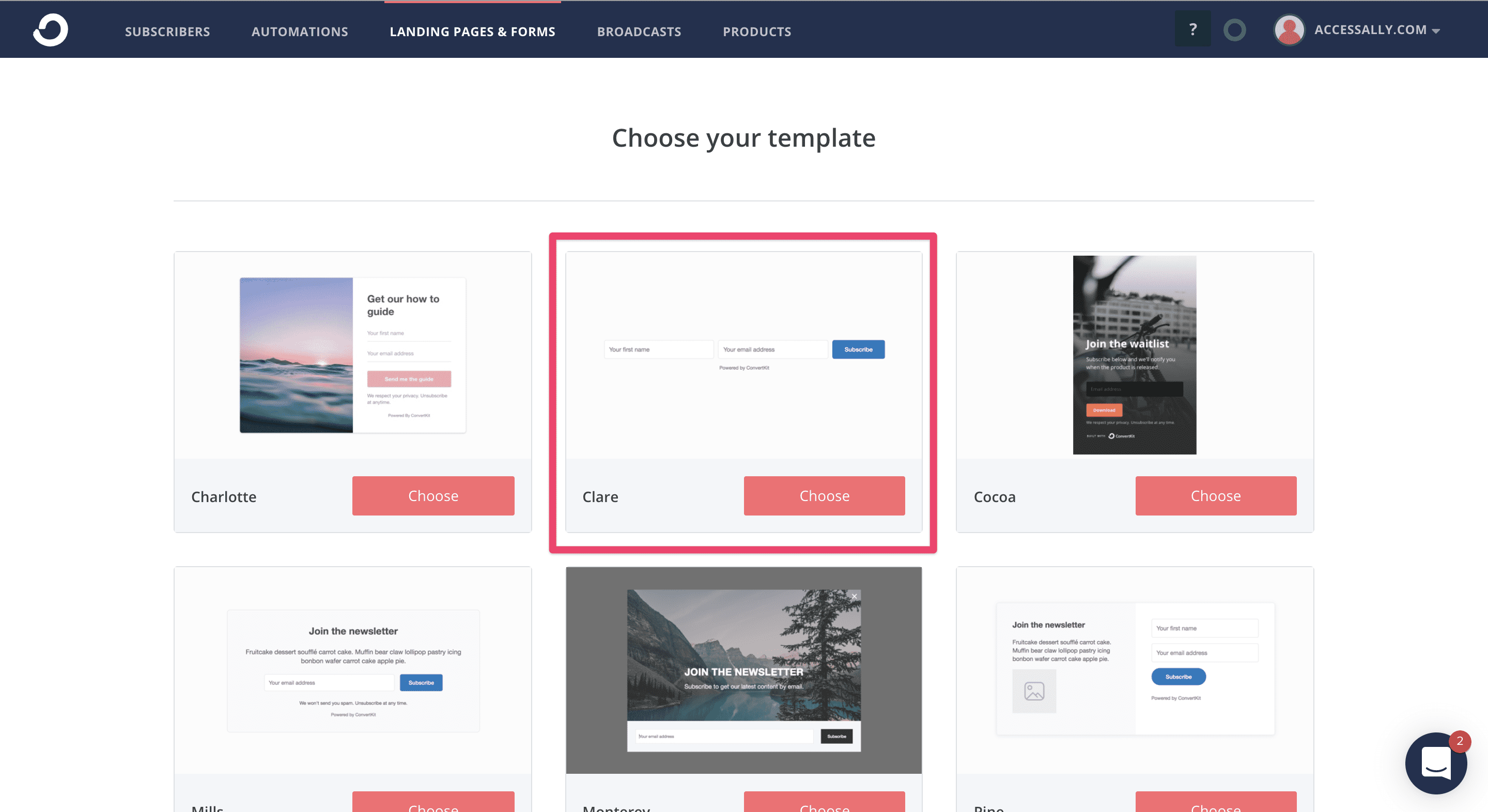
ActiveCampaign takes longer. You’ll need to mess with settings, test things, adjust triggers — but you can make your forms way smarter once you do. It’s not slow… it’s just not “drag it, ship it” speed.
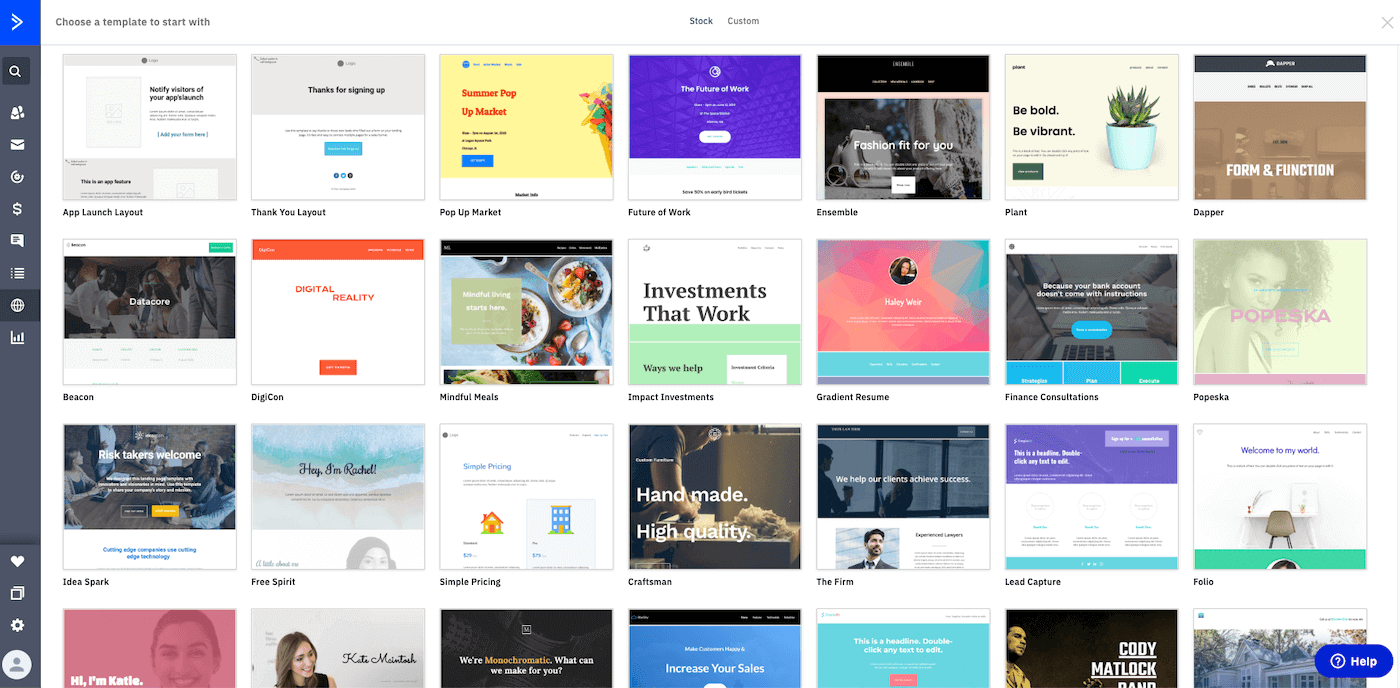
👉 Winner: ConvertKit — if you just want to get it out there today.
🎨 Design & Customization
ConvertKit keeps it clean and simple. The templates look good out of the box, but you’re not going to be tweaking layouts much. You can change colors, fonts, images — but not layouts or structure.
ActiveCampaign is the opposite: full drag-and-drop control, custom fields, conditional logic, hide/show elements based on user behavior. You can build a form that feels like part of your sales funnel, not just a signup box.
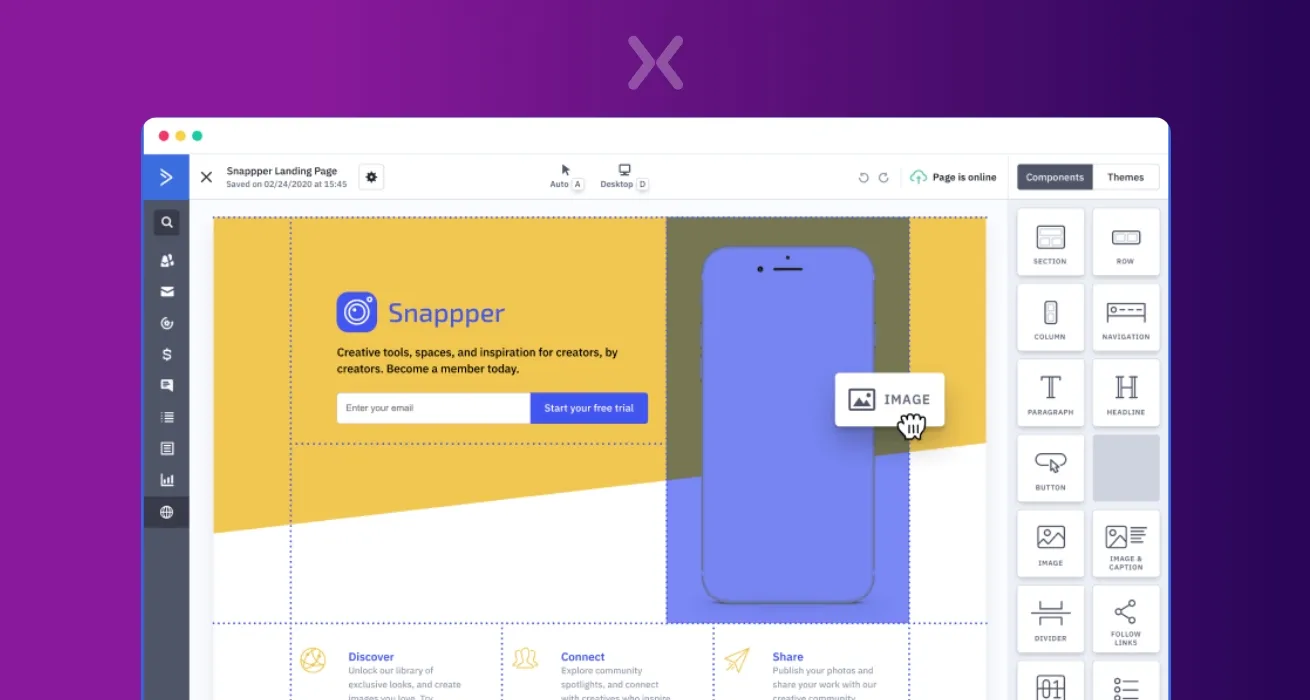
👉 Winner: ActiveCampaign — if you want total control.
🧠 Smart Behavior & Targeting
ConvertKit gives you basic tagging — so you know where someone came from — but that’s about it. No exit intent. No scroll triggers. No A/B testing.
ActiveCampaign shines here. You can trigger a form based on scroll % or exit intent, change what people see based on tags, run split tests, and feed every interaction straight into an automation.
👉 Winner: ActiveCampaign — all day, if you’re data-driven.
🧪 Analytics & Testing
This one’s simple.
ConvertKit = basic.
ActiveCampaign = built-in A/B testing and deeper reporting.
👉 Winner: ActiveCampaign — if you’re optimizing for conversions.
Which One Should You Pick?
| ConvertKit ✍️ | ActiveCampaign 🎯 | |
|---|---|---|
| Ease of Use | Super simple | Takes more setup |
| Templates | Clean, minimal | Fewer than expected |
| Form Types | Inline, modal, slide-in, full-page | Pop-ups, floating bars, exit-intent, etc. |
| Landing Pages | Fast + no website needed | Drag-and-drop builder |
| Advanced Features | Very limited | Conditional logic, A/B testing, triggers |
| Best For | Creators who want fast + simple | Marketers who love personalization + data |
👉 Go with ConvertKit if you:
Just want to launch a clean opt-in page fast
Don’t care about advanced logic or testing
Want something simple that just works
👉 Go with ActiveCampaign if you:
Need advanced form behavior (like showing different fields to different users)
Want full design freedom with drag-and-drop
Love customizing and automating the full funnel
⚙️ Email Automations: How Smart Do You Want Your Emails to Be?
💬 Who wins for email automation?
💡 My take?
If you’re thinking, “I just want to send the right email when someone signs up or clicks a link,” ConvertKit’s visual builder is a dream.
But if you’re like, “I want to build a system that does the thinking for me based on what my audience does,” ActiveCampaign is next-level powerful.
This is where things get spicy 🔥
If you’ve ever wanted your emails to just send themselves based on what people do (or don’t do), automation is your new best friend. But how much power you want — and how much time you’re willing to spend setting it all up — really determines which tool’s right for you.
Getting Started
ConvertKit makes it feel fun to build your first automation. Seriously — drag, drop, done. When someone joins a form? Send this sequence. If they click a link? Tag them. It’s that straightforward.

ActiveCampaign? You’re opening a full command center. You can start from scratch or use one of their (actually useful) pre-built recipes. But it will take some brain power upfront.

👉 Winner: ConvertKit — if you want to build something in 10 minutes without reading a help doc.
🔀 Complexity & Customization
ConvertKit shines for linear, simple flows — like a welcome series, product launch, or evergreen funnel. But once you start thinking, “If they do this, but not that, send them X… unless they’ve already bought Y…” — it starts to fall apart. There’s no true conditional branching inside email sequences.
ActiveCampaign, though? Pure logic playground.
“If they visit the pricing page but don’t buy → wait 2 days → send reminder → if they still don’t buy → tag them cold lead → notify sales team.”
Yup. You can actually build that.
👉 Winner: ActiveCampaign — all day, if you want automations that respond to behavior in real time.
🧩 Integration with Other Tools
ConvertKit is mostly focused on email and tagging. You can connect it to tools like Stripe, Teachable, or Shopify — but the logic still stays simple.
ActiveCampaign goes way further. Its automation builder can update deals in your CRM, assign tasks to team members, or even adjust lead scores — all inside the same flow.
👉 Winner: ActiveCampaign — especially if you’re combining sales, email, and CRM workflows.
🧠 Learning Curve
Look — ConvertKit wins here, no contest. You don’t need to know what “conditional logic” means. Just drag a few boxes, connect them, and you’re off to the races.
ActiveCampaign isn’t “hard,” but it is deep. You’ll probably have a few “wait, what does this setting do?” moments. But once you get it, it’s insanely powerful.
👉 Winner: ConvertKit — for ease and sanity.
Which One Should You Choose?
| ConvertKit ✍️ | ActiveCampaign 🚀 | |
|---|---|---|
| Automation Style | Visual, simple flows | Advanced logic & branching |
| Ease of Use | Super beginner-friendly | Steep learning curve |
| Triggers | Forms, link clicks, purchases | Tags, site visits, goals, custom fields |
| Branching Logic | Very limited | Full if/else conditional paths |
| CRM Integration | None | Built-in CRM with automation control |
| Best For | Creators & solo biz owners | Teams, marketers & sales pipelines |
👉 Go with ConvertKit if you:
Just want to send a welcome sequence or launch funnel
Love clean visuals and a super easy setup
Don’t need complex “if this, then that” logic
👉 Go with ActiveCampaign if you:
Need full control over what happens and when
Want to create behavior-based journeys and multiple paths
Run a business where automation = revenue
Reports & Analytics: What Can You Actually Track?
💬 Who win For Reports?
Analytics can either feel like “Oh cool, I get it” or “What is this chart even saying??” 😅
It all depends on how deep you want to go. Here’s the breakdown:
📬 Email Stats
ConvertKit gives you clean, instant feedback:
Open rate? ✅
Click-throughs? ✅
Which link got clicked? ✅
That’s about it — but honestly, that’s plenty if you’re a creator who just wants to know, “Did people read it?”
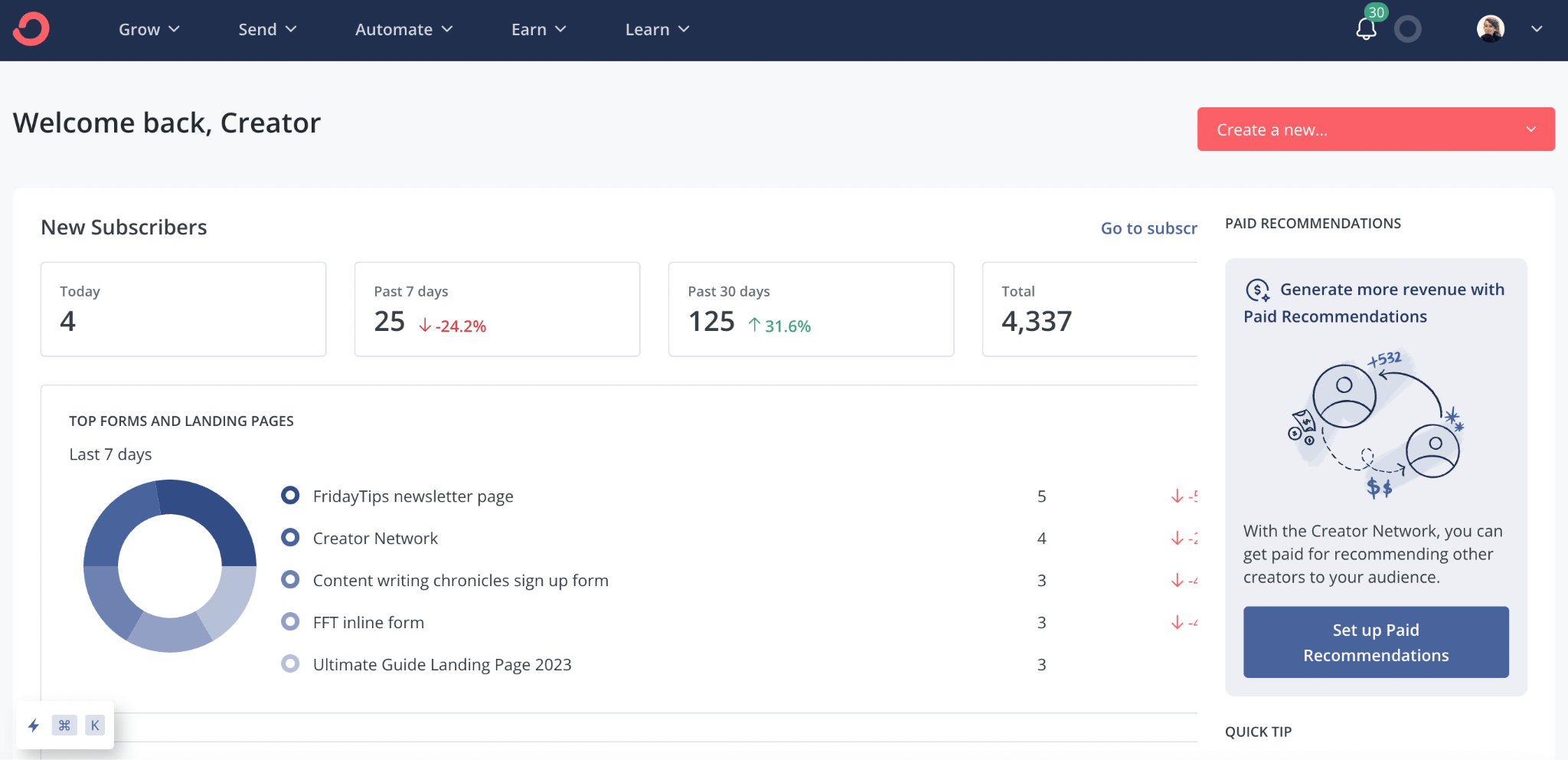
ActiveCampaign, though, takes it 10 steps further. You get everything ConvertKit gives you plus: device breakdowns, heatmaps, geo-location, when users opened, and detailed engagement tracking.
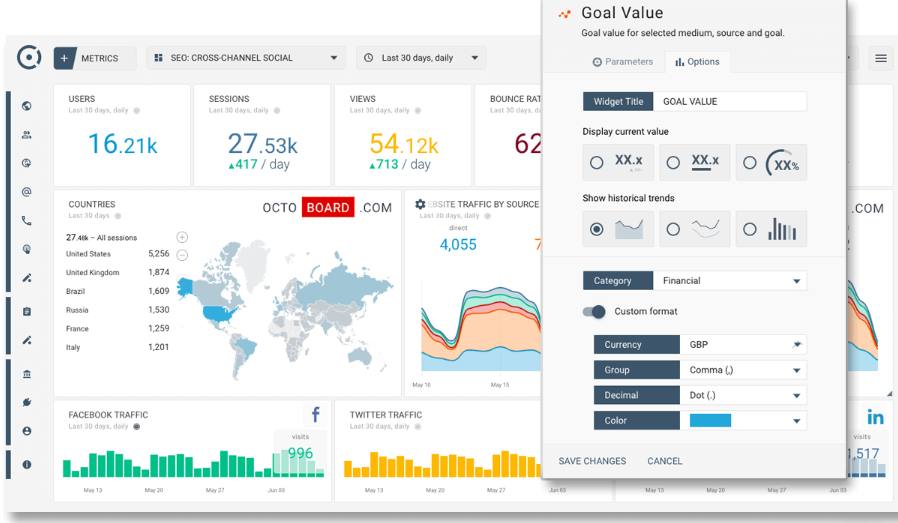
👉 Winner: ConvertKit for simplicity, ActiveCampaign if you’re a stat junkie.
🔄 Automation Performance
ConvertKit shows you the basics — like how many people moved through a step in your funnel. It’s clean and easy to follow. Great if you want a high-level overview.
But with ActiveCampaign, you get the full map. You can see where people drop off, who’s stuck, who completed the goal, and even run reports based on behavior or tags.
👉 Winner: ActiveCampaign — way more insight if you’re optimizing automations.
💸 Revenue & Conversion Tracking
ConvertKit… doesn’t really do this. You can sort of piece together data using tags or external tools, but there’s no real revenue tracking or goal-setting built in.
ActiveCampaign? Whole different story. If you’re using their CRM or ecommerce integration, you can track every lead, purchase, and dollar — all tied back to your emails and automations.
👉 Winner: ActiveCampaign — hands-down, if you care about conversions and ROI.
🧪 A/B Testing
ConvertKit doesn’t have it. (At least not for emails — it’s a big gap.)
ActiveCampaign has full split testing built in: subject lines, content blocks, calls to action — and it shows you exactly what worked and why.
👉 Winner: ActiveCampaign — especially if you want to improve results over time.
Which One Should You Choose?
| ConvertKit ✍️ | ActiveCampaign 📈 | |
|---|---|---|
| Ease of Use | Super simple | More complex |
| Email Metrics | Opens, clicks, link activity | Opens, clicks, devices, geo, heatmaps |
| Automation Insights | Basic step tracking | Full visual path performance |
| Conversion Reporting | Very limited | Built-in revenue + goal tracking |
| A/B Testing Data | None | Full test reports + insights |
| Best For | Creators who want clarity | Marketers who love data & testing |
👉 Go with ConvertKit if you:
Just want clean, basic stats
Don’t care about deep funnel tracking or sales data
Prefer “at-a-glance” dashboards that make sense instantly
👉 Go with ActiveCampaign if you:
Want detailed reports and breakdowns
Use A/B testing and data to guide your decisions
Need to track leads, sales, and full funnel performance
Email Deliverability: Getting Into the Inbox
💬 Who win For Email Deliverability?
ConvertKit: Clean Emails That Get Opened
Here’s the thing — ConvertKit doesn’t overcomplicate things. Because their emails are clean, lightweight, and mostly text-based, they’re less likely to end up in the spam folder.
I noticed this early on: my newsletters actually hit inboxes more consistently than when I was using other tools.
What makes it work:
✅ Simple, no-fluff formatting = fewer spam triggers
✅ Great sender reputation — they’re known for working with creators
✅ DMARC, DKIM, SPF — all set up easily to protect your domain
✅ No weird code or tracking overload
But here’s the flip side: there’s less control. You won’t get fancy tools to test inbox placement or customize sending rules.
✅ Best for: Personal brands, coaches, and creators who send story-based emails and want to stay out of spam
✅ Great inbox rates for plain-text-style emails
✅ Known for high engagement, especially with warm lists
✅ Easier domain authentication setup
✅ Clean code = good sender score
❌ Limited testing tools (no built-in spam checkers or previews)
❌ No dedicated IP or custom throttling
❌ Can’t test deliverability by inbox (Gmail vs Outlook, etc.)
ActiveCampaign: Total Deliverability Control 📈
If you want more control over how your emails land — and why — ActiveCampaign is for you. It’s packed with deliverability features most tools don’t offer (unless you’re on super high-end plans).
When I used it for a more complex client campaign, I appreciated how much I could tweak — and test.
What impressed me:
✅ Inbox preview and spam check tools
✅ Dedicated IP option for high-volume senders
✅ Advanced segmentation = better engagement = better deliverability
✅ Email throttling (send in batches, not all at once)
✅ Deliverability reporting across inbox providers
Honestly, if you’re sending at scale — or you’ve had past deliverability issues — this is where ActiveCampaign really shines.
✅ Best for: Agencies, SaaS companies, or ecommerce brands sending to large, segmented lists
✅ Powerful deliverability testing tools
✅ Support for custom email sending setups
✅ More advanced domain control + IP options
✅ Inbox previews and spam filter analysis
❌ Slightly more technical to set up right
❌ Not beginner-friendly for deliverability fixes
❌ Best tools reserved for higher pricing tiers
👉 My advice?
If you’re writing heartfelt newsletters or sharing weekly content with your audience, ConvertKit will get your message through just fine.
But if you’re running big campaigns, sending promos to huge lists, or need advanced deliverability tools — ActiveCampaign is built for that.
Pricing: What Will It Actually Cost You?
👉 My advice?
If you’re like, “I just need to send some emails and grow without stressing over cost,” go with ConvertKit.
But if you’re ready to scale big and need your email marketing to do more than just send newsletters… ActiveCampaign is the investment that pays off. 💼
Let’s be real — features are fun, but pricing is where the stress kicks in 😅. Whether you’re just starting out or growing fast, here’s how these two stack up.
| ConvertKit 💌 | ActiveCampaign 🚀 | |
|---|---|---|
| Free Plan | ✅ Yes (up to 1K subs) | ❌ None |
| Starting Price | $15/mo (paid plan) | $39/mo |
| CRM Features | ❌ None | ✅ Included (from Plus) |
| Best For | Creators & solopreneurs | Agencies & growing businesses |
| Pricing Jump? | Gradual | Steep as you scale |
| Annual Discount? | ✅ Yes | ✅ Yes |
🎯 ConvertKit: Simple, Affordable, and Creator-Friendly
If you’re a blogger, coach, or newsletter writer just trying to get your email list off the ground, ConvertKit is like your supportive little starter pack.
Here’s why it feels so approachable:
✅ Free forever plan (up to 1,000 subs — no credit card needed!)
✅ Clean, no-surprises pricing — you only pay more when you grow
✅ Creator Pro plan adds cool extras like FB Custom Audiences & advanced reports
✅ Cancel or downgrade anytime — no contract stress
📌 Example pricing:
| Subscribers | Free Plan | Creator | Creator Pro |
|---|---|---|---|
| 0–1,000 | $0/mo | $15/mo | $29/mo |
| 1,000–3,000 | ❌ | $49/mo | $79/mo |
| 3,000–5,000 | ❌ | $79/mo | $111/mo |
💡 Best for: Solo creators who want to start now and scale later — without overthinking it.
💼 ActiveCampaign: More Power, Higher Price Tag
ActiveCampaign isn’t here to play small. It’s made for businesses that need serious automation, CRM tools, and deep-level segmentation — and its pricing reflects that.
What you get:
✅ No feature FOMO — even the Lite plan includes advanced automation
✅ CRM and lead scoring built in (starting on Plus plan)
✅ Ideal for teams or scaling companies who need a central marketing brain
✅ You’ll pay more, but you’ll get more (if you use it)
📌 Snapshot pricing (based on 1,000 subs):
| Plan | Monthly Cost | Key Features |
|---|---|---|
| Lite | $39/mo | Email, automation, site tracking |
| Plus | $70/mo | CRM, lead scoring, landing pages |
| Professional | $187/mo | Predictive sending, split automations |
⚠️ Price jumps fast as your list grows — 5K subs could easily run you $99–$300+/mo depending on your plan.
💡 Best for: Businesses, agencies, and pro marketers who want to build complex email strategies that convert.
🏁 Final Verdict: What’s Worth Your Money?
Go with ConvertKit if you…
Are just getting started or have under 1,000 subscribers
Want to start free and upgrade only when you’re ready
Prefer predictable, easy-to-understand pricing
Don’t need CRM or deep automation yet
Go with ActiveCampaign if you…
Run a growing business and want all the marketing bells & whistles
Need CRM, lead scoring, or advanced sales workflows
Don’t mind paying more to get enterprise-level features
Want everything under one roof (email, automation, CRM, reports)
Final Verdict: Which One’s the Right Fit for You?
So, here’s the deal — ConvertKit or ActiveCampaign? It all boils down to your needs and how you want to work.
👉 If you’re a creator, blogger, or solo entrepreneur who wants to keep things simple, focused, and hassle-free, ConvertKit is your go-to. It’s easy to use, affordable, and perfect for sending clean, personal emails without the extra noise.
👉 But if you’re running a business that needs serious automation, deep customization, and tools to manage every customer touchpoint, ActiveCampaign is where the real power lives. It’s a bit more complex, but if you want to scale smart and detailed, it’s totally worth it.
No matter which you choose, both are trusted by thousands to help grow their audience and boost sales. So pick the one that fits your style and goals, and get ready to take your email marketing to the next level! 🚀
Convertkit vs Activecampaign alternatives
AWeber – Trusted, Easy to Use, and Reliable

AWeber is one of the veterans in the email marketing space, known for its simple setup and dependable tools. It’s great for small businesses and creators who want straightforward email marketing without a steep learning curve.
Key Features
Drag-and-drop email builder plus a simple rich text editor
Pre-built automation workflows like welcome series and follow-ups
Landing page and signup form creator included
Reliable deliverability and solid customer support
Why Choose AWeber?
Perfect for beginners and small businesses who want a trustworthy, easy-to-use platform that covers all the basics — no fluff, just results.
Pricing Plans
Free Plan: Up to 500 subscribers, 3,000 emails/month
Paid Plans: Starting at $19.99/month, scaling with subscribers
👉 You can check out the full comparison of AWeber and ActiveCampaign here
MailerLite – Simple, Affordable, and Easy to Scale

MailerLite is a friendly email marketing tool that strikes a perfect balance between ease of use and powerful features for growing businesses. It’s ideal for small teams who want clean design options and solid automation without spending a fortune.
Key Features
Intuitive drag-and-drop editor plus rich text editor
Basic automation workflows like welcome emails and drip campaigns
Built-in landing page and popup builder
Strong focus on deliverability and simple subscriber segmentation
Why Choose MailerLite?
Great for anyone looking for an affordable, no-fuss platform that can grow with your business. Beginner-friendly but still packs enough punch for scaling beyond simple newsletters.
Pricing Plans
Free Plan: Up to 1,000 subscribers, 12,000 emails/month
Paid Plan: Starts at $10/month, increasing with subscriber count
👉 You can check out the full comparison of MailerLite and ActiveCampaign here.
You can checkout full Comparison of Mailerlite and Activecampaign here
Omnisend – Ecommerce-Focused Automation and Multichannel Marketing
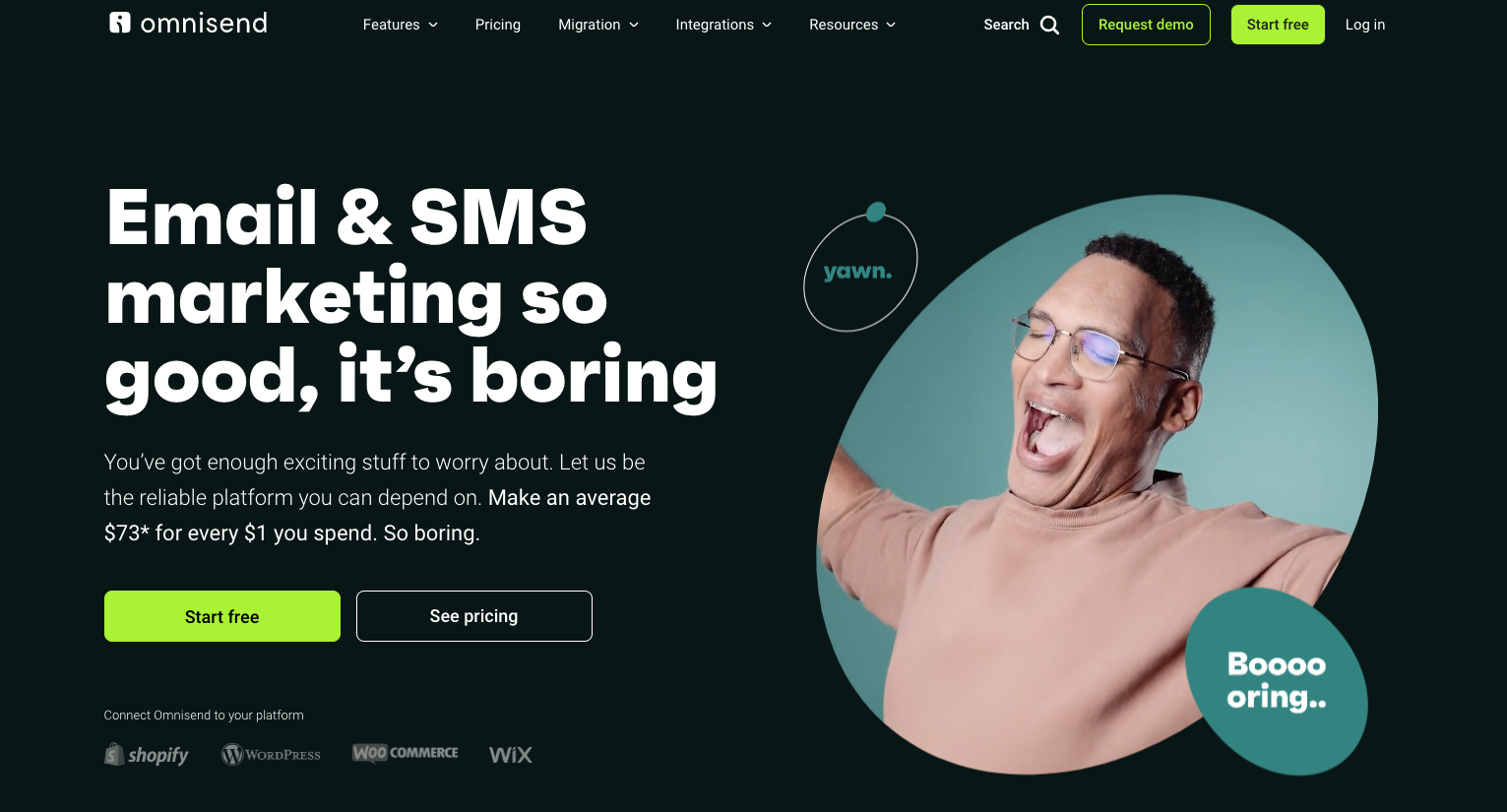
Omnisend is built specifically for online stores, combining email marketing with SMS, push notifications, and more. It offers powerful automations, product pickers, and ecommerce-tailored templates to help boost sales and engagement.
Key Features
Multichannel campaigns: email, SMS, push notifications, and beyond
Ready-made automation flows for cart recovery, welcome series, and order follow-ups
Drag-and-drop editor with ecommerce-specific blocks like product recommendations and discount codes
Integrates with Shopify, BigCommerce, WooCommerce, and more
Why Choose Omnisend?
Perfect for ecommerce businesses wanting to combine email and SMS marketing in one easy platform. Its ecommerce focus and simple automation make it a strong contender.
Pricing Plans
Free Plan: Up to 500 emails/day, 60 SMS messages/month
Standard: Starts at $16/month (extra cost for additional emails)
Pro: From $99/month, adds advanced features and more channels
